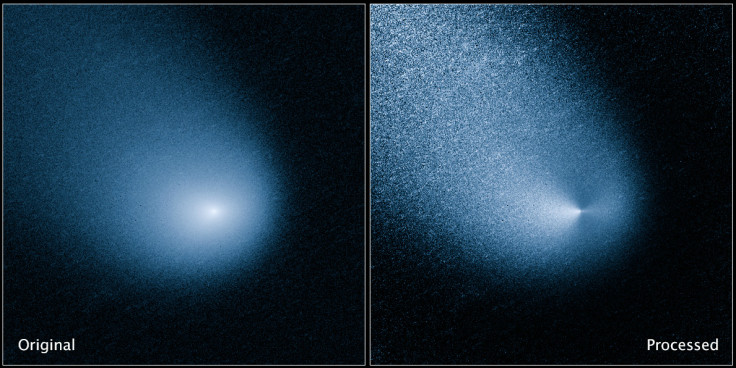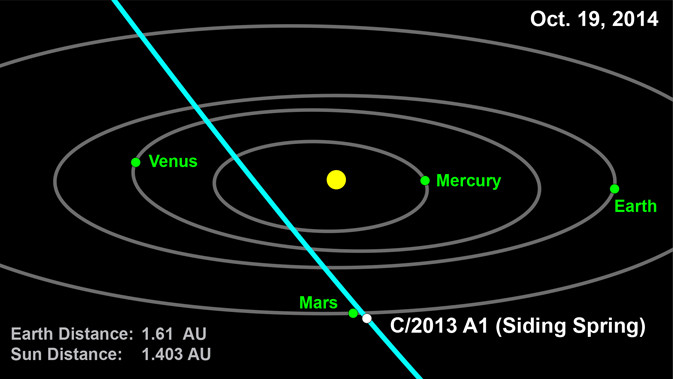Hubble Spots 'Siding Spring' Comet C/2013 A1 Set for Close Shave with Mars

Nasa's Hubble Telescope has spotted a comet that will have an extremely close shave with Mars – coming less than half the distance between Earth and the moon with the red planet.
Comet C/2013 A1, also known as Siding Spring, will come within 84,000 miles of Mars on 19 October.
The space agency released an image of the comet taken on 11 March when the comet was 353 million miles from Earth.
The image shows the comet surrounded by a glowing dust cloud measuring around 12,000 miles across.
Siding Spring was discovered in January last year by Robert H McNaught. It is currently falling towards the sun on a one-million-year orbit. At present, it is within the radius of Jupiter's orbit.
While it will come extremely close to Mars, it poses no threat to Earth. It will make its closest approach to our planet on 25 October when it comes within 130 million miles from Earth.

It is not thought the comet will be bright enough to be seen with the naked eye, although it will be visible through telescopes.
Hubble last observed Siding Spring on 21 January when Earth was crossing the comet's orbital plane – its path around the Sun. This observation allowed astronomers to establish the speed of the dust coming off the comet.
"This is critical information that we need to determine whether, and to what degree, dust grains in the coma of the comet will impact Mars and spacecraft in the vicinity of Mars," said Jian-Yang Li of the Planetary Science Institute in Tucson, Arizona.
The picture on the right shows the comet after image processing techniques were applied to remove the hazy glow of the dust cloud. This image will allow experts to measure its nucleus' pole and axis of rotation.
Astronomers predicted Siding Spring would make a close encounter with Mars in April last year. At the time, Nasa estimated the risk of the comet hitting the red planet was one in 120,000.
© Copyright IBTimes 2025. All rights reserved.






















